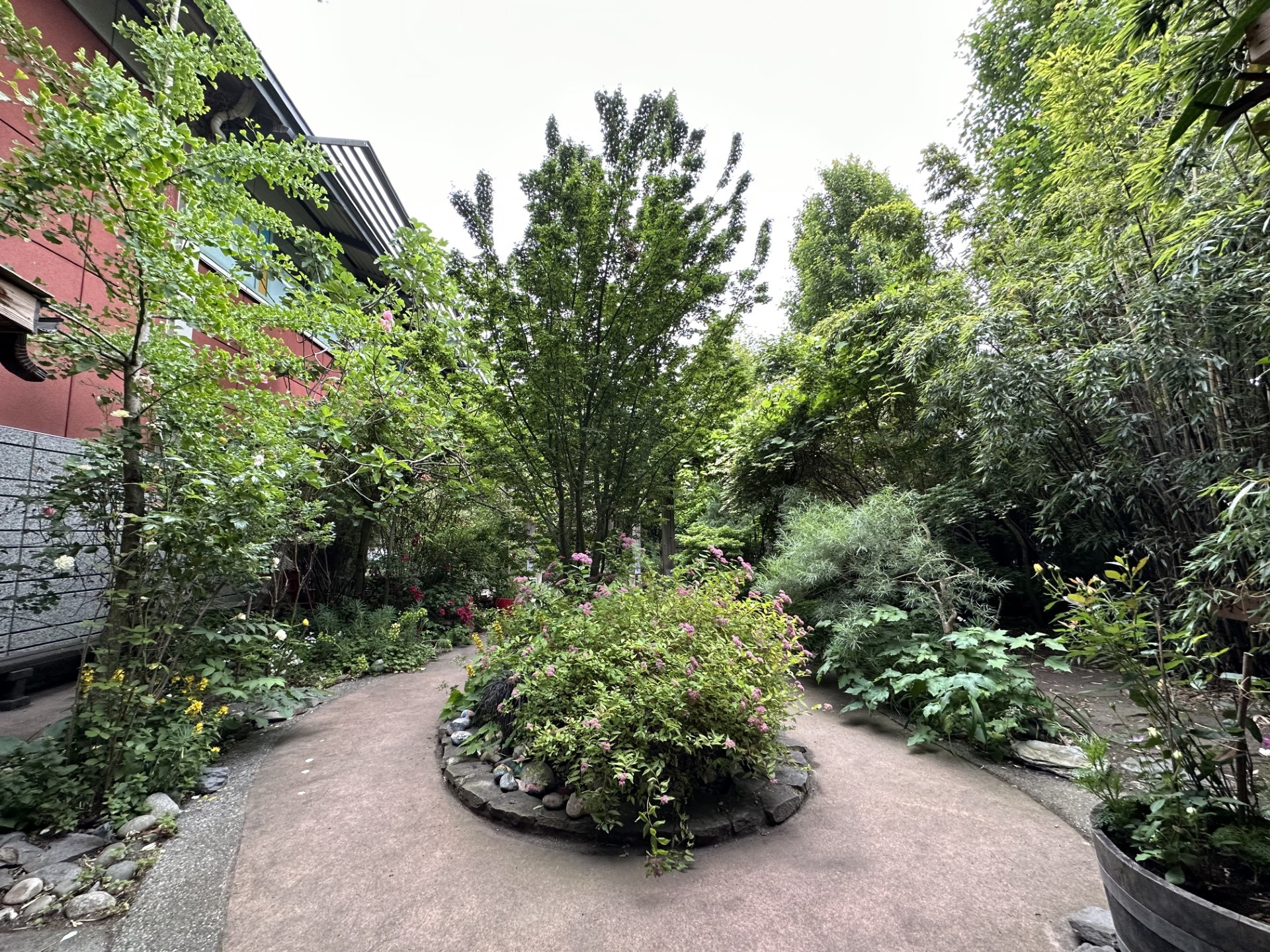
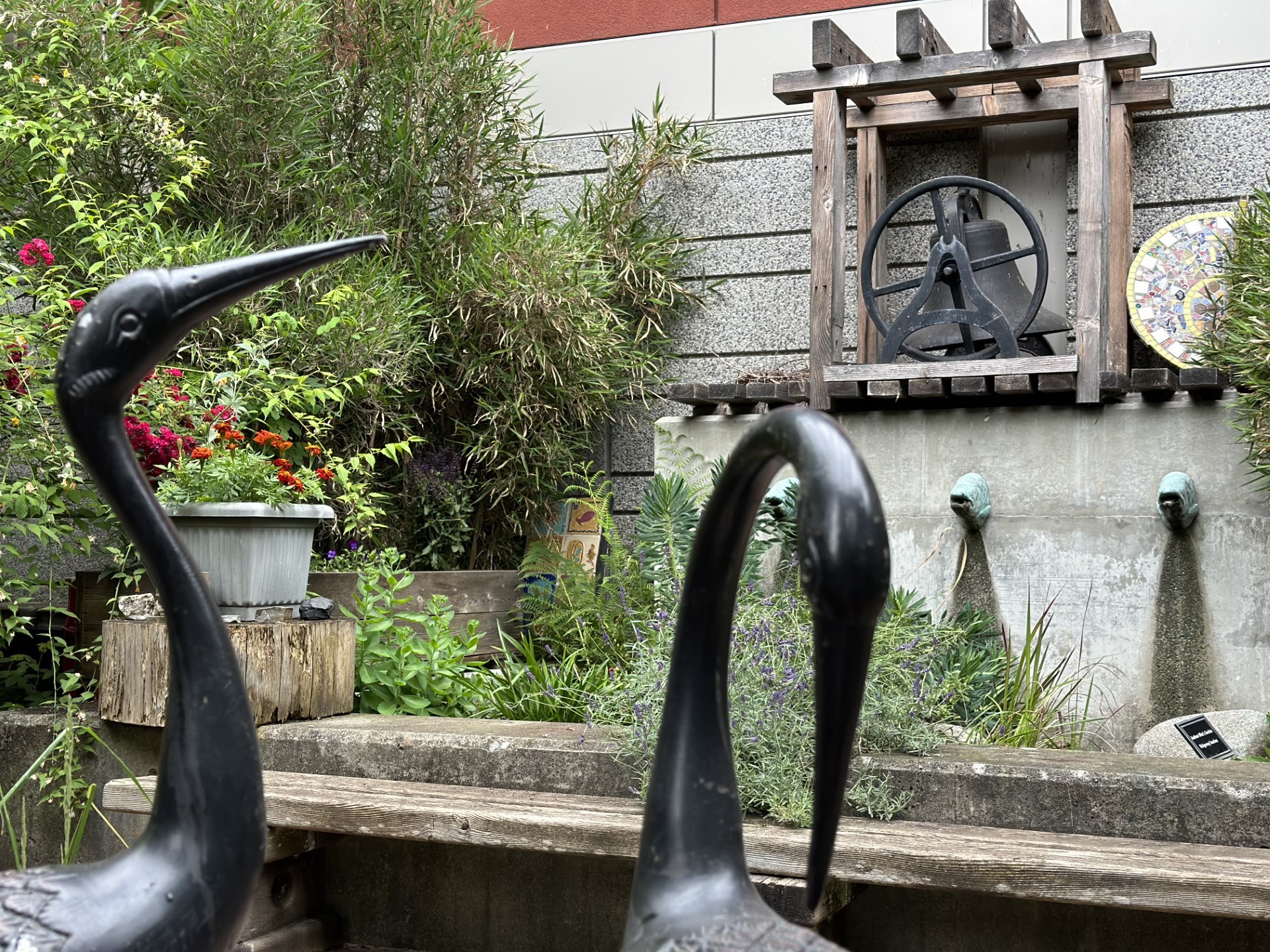
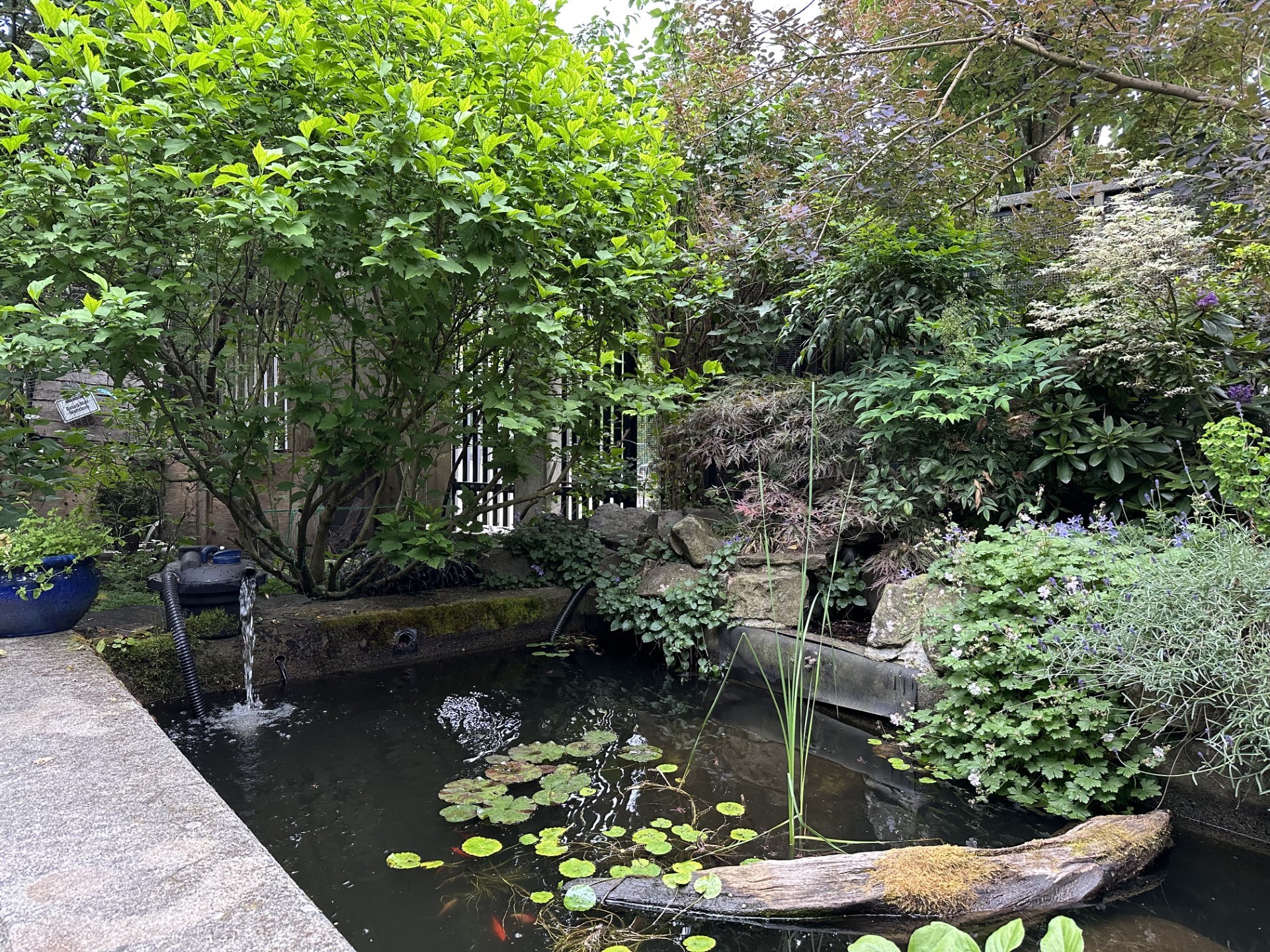
The original garden was demolished during the Ridgeway Elementary School renovation. The Refuge Committee worked with the school district Facilities Manager and the Landscape Architect to develop plans for the new garden. First, the Refuge hard landscaping, pond concrete, and water feature were completed. Next, students, teachers and community members worked to create new garden beds, plant trees, shrubs and a harvest vegetable garden. From here, the team included space for students, compost bins, and garden storage.
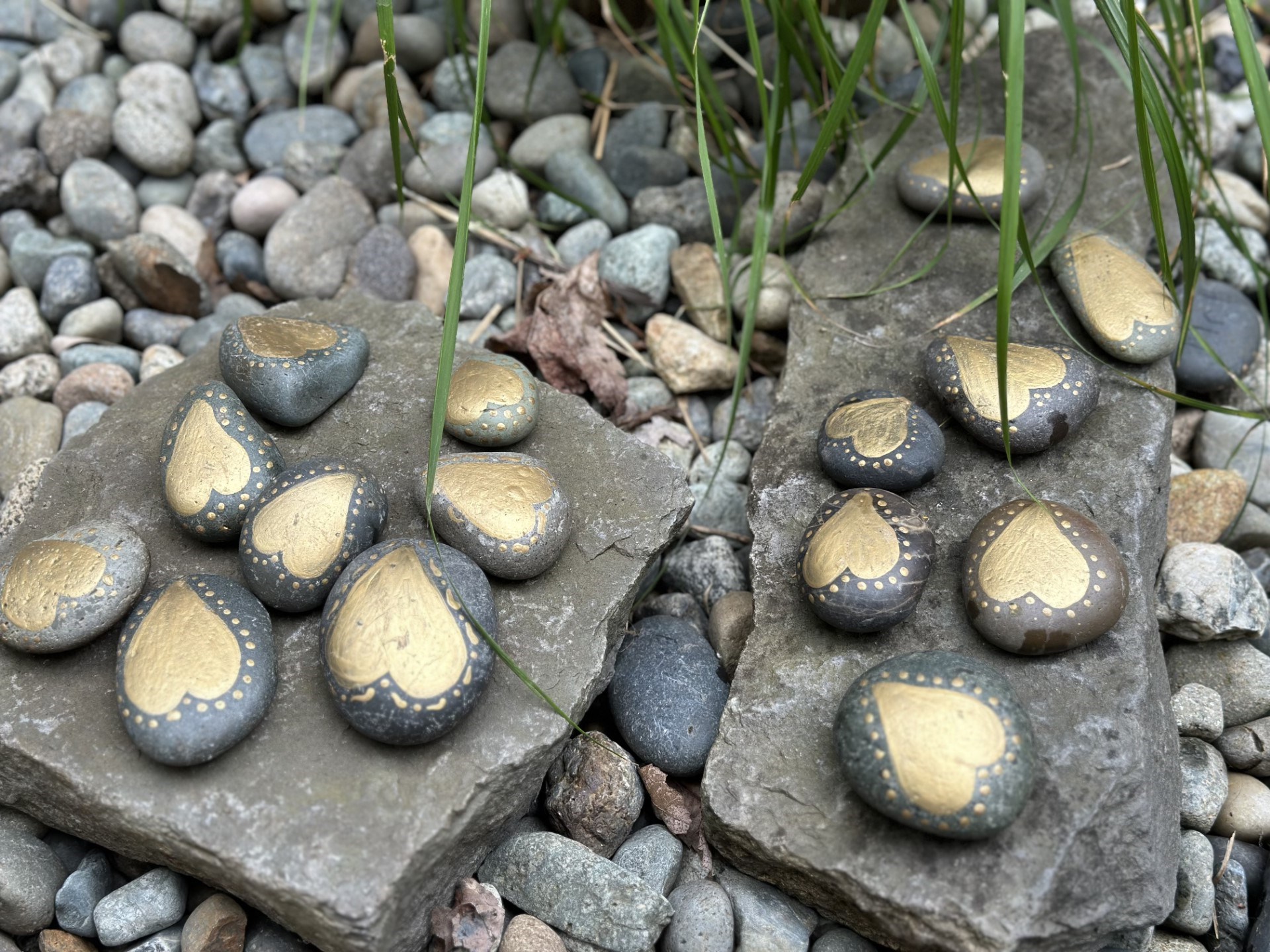
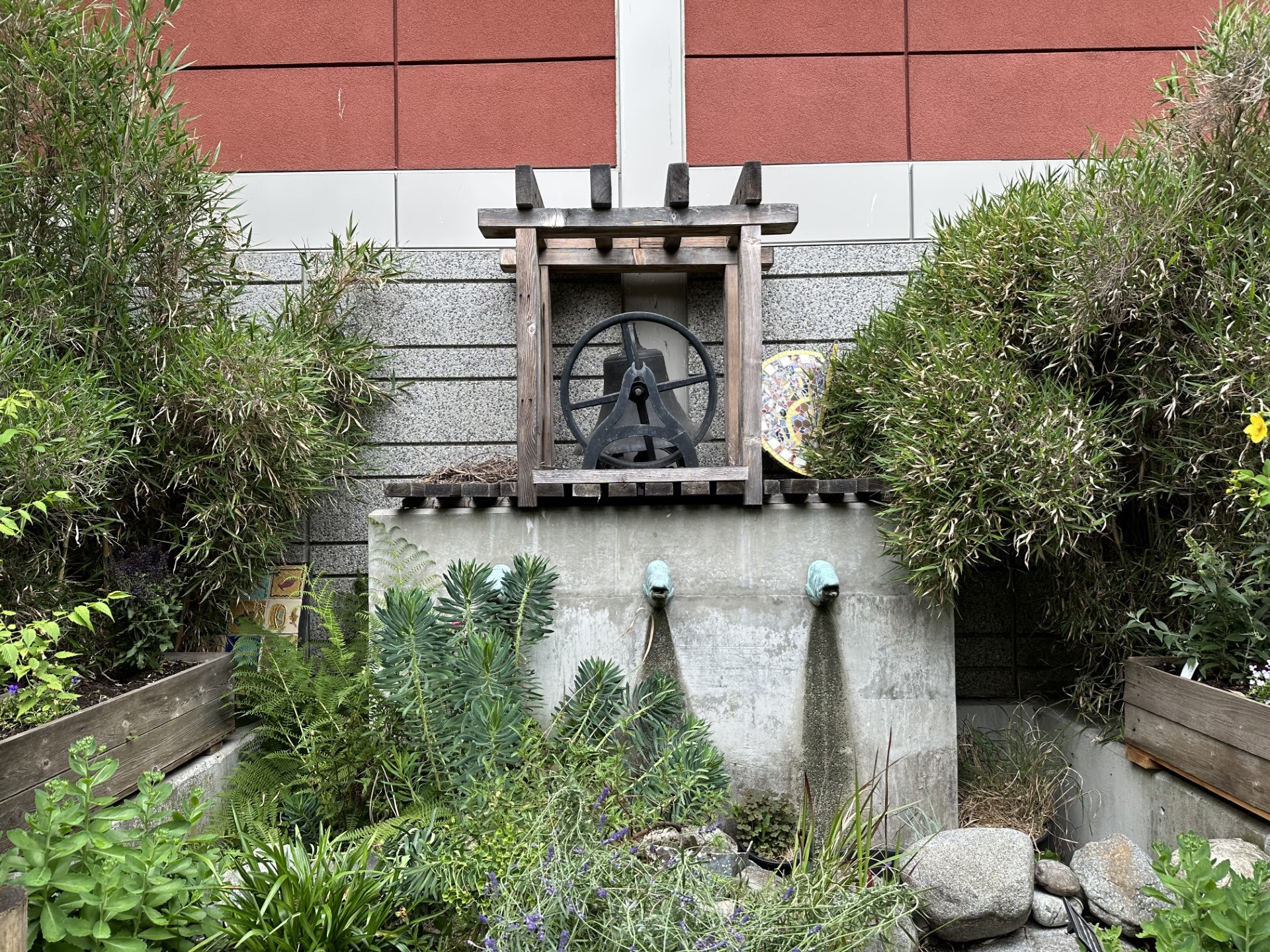
Each year, students are involved in the hands-on in the dirt, planting and caring for the garden. Objectives for our students are many, including developing skills like observation, collection, organizing, predicting and developing positive values, attitudes, and beliefs about the environment.
The Refuge Committee has always been a group of dedicated teachers, support staff and administrators who have shared responsibility for planning and organizing for curricular connections, student activities, and special events. Along with providing a calm natural space for learning, our goal with the Refuge is to enhance our students and community members’ environmental awareness through education and participation in the development and care of shared Refuge.
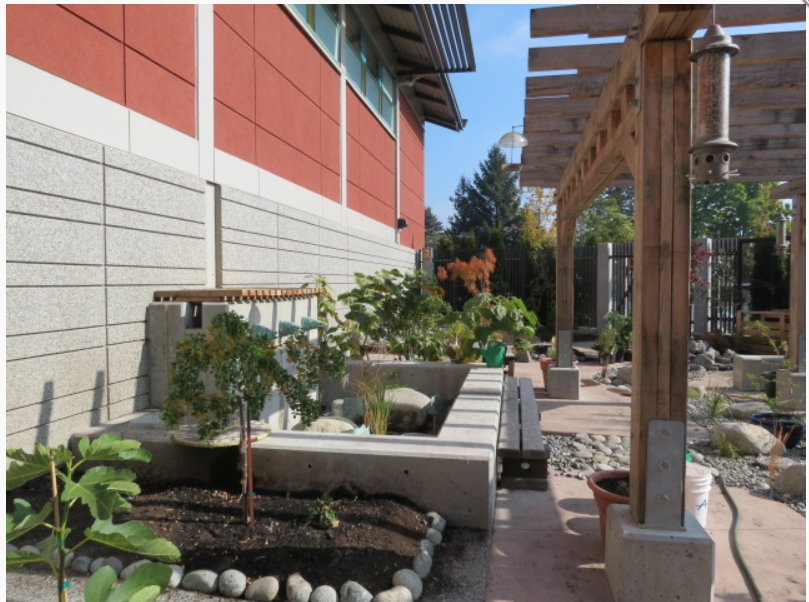
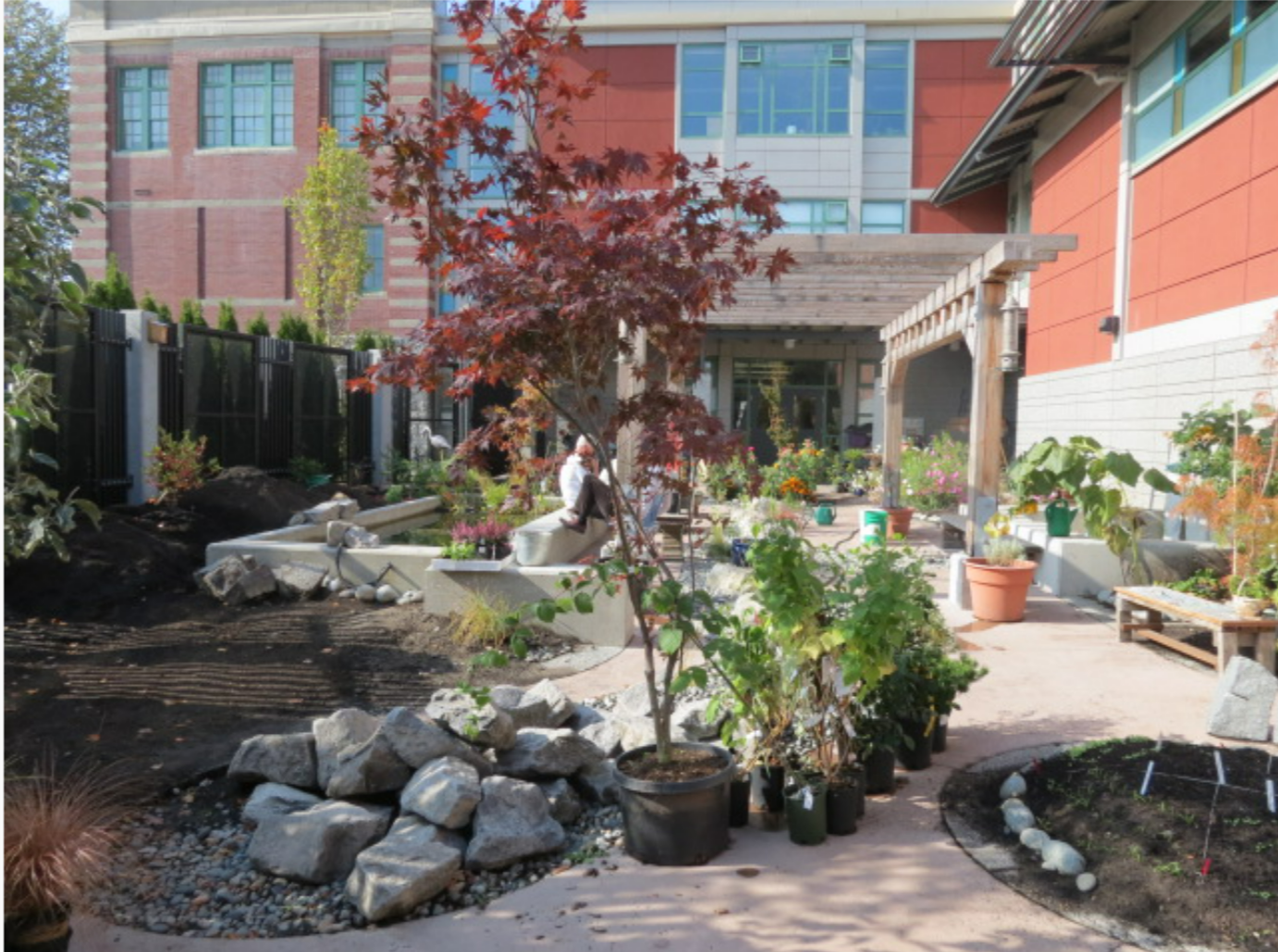
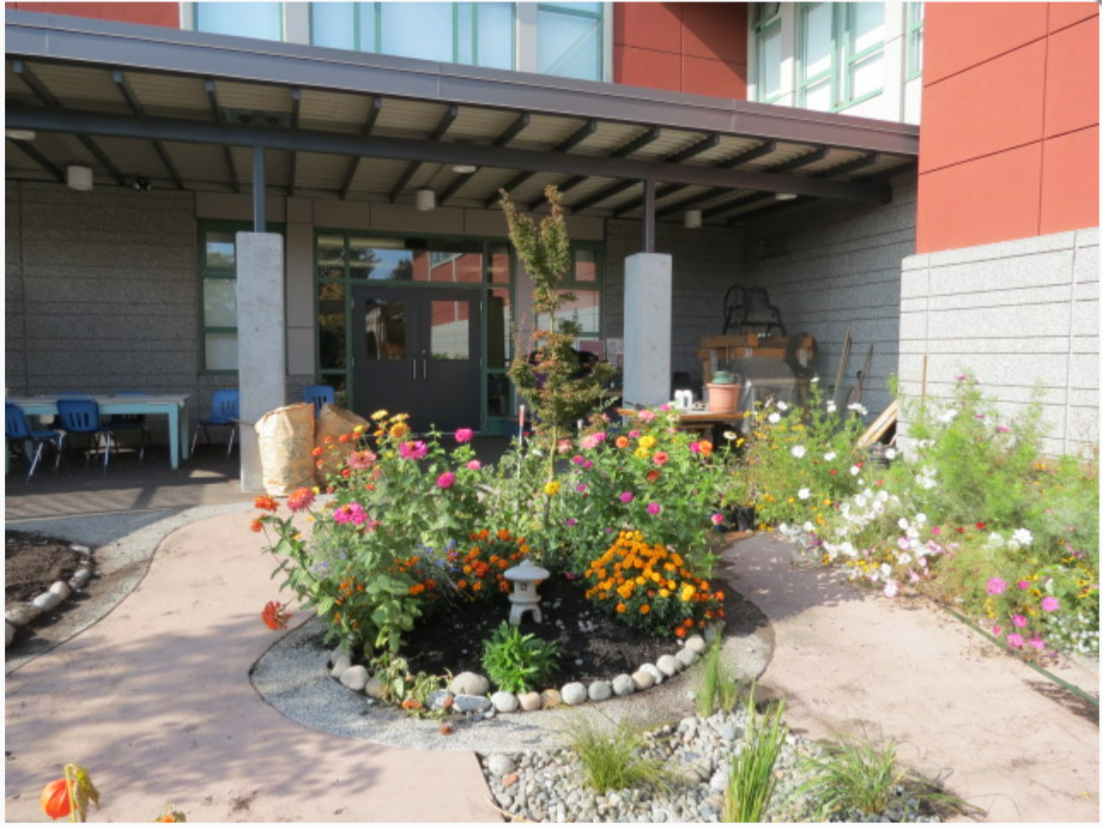
Ridgeway’s original Refuge Garden celebrated its 20th Anniversary in 2009. In l989 staff, parents, community members and students began the process of changing a barren school courtyard into an outdoor classroom. During that 20 years trees, vines, shrubs, and perennials were planted in honour of administrators, authors, teachers, students and famous dignitaries like the Honourable David Lam.
The ever changing gardens included a butterfly garden, a herb garden, a vegetable harvest garden, many perennial gardens, pots for planting bulbs and annuals, and much more. Contributions by many community members included planning and construction of rock walls, pathways, benches, a covered patio, and a garden shed. Community Guardians watered and cared for the garden over the summer months for over l6 years. Compost bins were filled with collections from classrooms and the soil used in garden beds.
During those early years students grunted and dug holes. Parents sweated, breaking up concrete. Teachers gladly brought plants from their home gardens. People working in the Refuge gradually took ownership. They discovered relationships between their efforts and their neighbours' efforts. Students created new paths to explore the space. Stepping stones were individually poured by students and strategically placed along the paths. A primary class built a deck under our new awning to help create year-round access. Students, parents and staff built a pond that soon became a focal point in the Refuge.
There are not a lot of places in a school where staff and students can pause and reflect. Students observed the subtle seasonal changes. Teachers worked on creating an inviting environment. Cooperative learning in a setting where the outcomes are unpredictable replaces full frontal teaching. Students and teachers make spontaneous discoveries. No one knows the answers. Teachers rephrase the questions. Curiosity awakens. Each year more and more people became intimately involved with the Refuge. The staff and students of Ridgeway began to include the Refuge as a natural resource in their day-to-day lives in the school. Seasonal changes joyfully shared. Individual students with their acute observation skills and fresh perspectives surprising staff members with their discoveries. Ridgeway’s original Refuge!